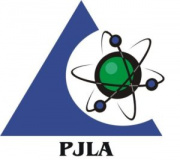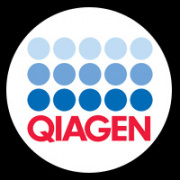6th Annual Emerald Conference
About 6th Annual Emerald Conference
The Emerald Conference is the most advanced technical and comprehensive science conference in the cannabis industry. It is the leading industry forum for discussion on discovery science, as well as how science and data support best practices in cultivation, production, and quality assurance. The Emerald Conference has become a must-attend event for decision-makers in analytical testing, extraction science, research and development, cultivation science, formulations, and pre-clinical research—all in one place at one time.
Speakers
Agenda
View on the event websiteWednesday, February 26
12:30 – 6:00 PM 2nd Annual Emerald Classic
Join us for a day of golf to benefit the Last Prisoner Project. A non-profit seeking to correct the fundamental injustice inflicted on those who have suffered non-violent criminal cannabis convictions and the consequences of those convictions. Through intervention, advocacy, and awareness campaigns the Last Prisoner Project will work to redress the past and continuing harms of these unjust laws and policies.
4:00 – 8:00 PM Early Registration
Pick up your badge and SWAG bag at Registration located in the Commodore Foyer.
6:30 – 8:30 PM Confident Cannabis Welcome Reception
Come out to say hello to old friends and meet new ones. Have a drink on Confident Cannabis and enjoy a few snacks.
Thursday, February 27
7:00 – 8:15 AM Breakfast
Complimentary continental breakfast served on the Marina Terrace
7:00 AM – 5:00 PM Registration
Pick up your badge and SWAG bag at Registration located in the Commodore Foyer.
7:15 AM – 8:15 AM Breakfast Session sponsored by Agilent & Medicinal Genomics
Whole genome sequencing of 43 cannabis and hemp varietals reveals a pathogenic path to breeding of <0.3% THCA varietals.
The difference between cannabis and hemp is hotly debated. Many genetic markers exist to differentiate these but few genetic markers predict the plants that will express less than 0.3% THCA. A whole genome sequencing survey of 43 genomes to over 50X coverage on Illumina reveals a CBCAS gene cluster that is frequently deleted in Type I plants but often present in Type III plants. The presence of this extra set of cannabinoid synthase genes is believed to be the cause of “Hot Hemp” and genomics directed breeding could enable and guide the breeding of compliant hemp lines.
There is one catch. This multi-megabase CBCAS deletion also contains multiple pathogen response genes (NPF3, NIP1, PIP1, RKF1) suggesting breeding for compliant hemp will enrich for hemp with higher microbial loads and potentially more pathogen exposure. To address this we cloned a Cannabis Pathogen Response gene into Ecoli for fungicidal assays and potential foliar spray development. Tools to detect, and manage endophytes will be discussed.
Streamlining Cannabis Analysis by ICP-MS to Ensure Accuracy and Productivity with Enhanced Software Techniques
The Agilent 7700, 7800 & 7900 ICP-MS are proven for reliable analysis of routine cannabis analysis for toxic metals and any additional metals of interest. The ability to obtain accurate results using unique software tools, as well as, monitoring the associated analysis remotely allows ease of multi-tasking with sample preparation and other analytical techniques. Using advanced acquisition techniques and remote monitoring of the analysis allows for more precise and accurate data while also assuring the cannabis samples are running smoothly allowing a more productive workflow.
A plated breakfast to be served.
8:15 AM – 8:30 AM Welcome Speech Speaker: Wes Burk
Welcome message from the President of Emerald Scientific
8:30 AM – 8:45 AM Last Prisoner Project – Change is Coming! Speaker: Andrew DeAngelo
Founding member of the Last Prisoner Project, A non-profit seeking to correct the fundamental injustice inflicted on those who have suffered non-violent criminal cannabis convictions and the consequences of those convictions. Through intervention, advocacy, and awareness campaigns the Last Prisoner Project will work to redress the past and continuing harms of these unjust laws and policies. Last Prisoner Project is the beneficiary of the 2nd Annual Emerald Classic.
8:45 AM – 9:00 AM Scientific Director Introduction Speaker: John Abrams, Ph.D.
Opening remarks from the Emerald Conference’s Scientific Director
9:00 AM – 9:30 AM Vaping-induced Lung Illness and the Chemistry of Vaping Speaker: Robert Strongin, Ph.D.
An overview of recent events and current scientific understanding of vaping-induced lung injury will be presented. This will include our new studies of counterfeit additive formulations. The identification and levels of the major ingredients, along with their known health effects, will be described. In addition, our lab’s recent investigations of the chemical reactions taking place during the heating and aerosolization of concentrated THC formulations will be discussed. The extensive determination of the products that form during the vaping and dabbing of cannabis concentrates will be described, along with the potential associated health impact.
9:30 AM – 6:00 PM Expo Hall Open
Meet with our Exhibitors & Sponsors in the Expo Hall, Take a shot at gaining points for prizes in the mobile app game, Click.
9:30 AM – 10:15 AM Morning Break
Take a walk around the Expo Hall and visit Exhibitors & Sponsors while recharging with a coffee, tea, or water.
10:15 AM – 10:45 AM Looking under the Hood of the Cannabis Plant: A Molecular Evaluation of Cannabinoid Production Speaker: Peter Apicella
Due to federal government restrictions on grant support for cannabis research until only recently, as well as the lack of reports by industry breeders in peer-reviewed research publications, we currently know little about the regulation of the molecular steps of the cannabinoid biosynthetic pathway, and physiological parameters that underlie cannabinoid and terpene production in cannabis. Our work focuses on generating fundamental new information that informs about this biological system. We use real-time quantitative PCR to measure the expression of key genes related to cannabinoid and trichome production. Experimental results presented here associate increased gene expression of a prenyltransferase, geranyl pyrophosphate: olivetolate geranyl transferase (GOT), leading to generation of cannabigerol acid as most closely linked to tetrahydrocannabinolic acid production in the unfertilized female flower during reproductive growth cycles. The gene encoding prenyl transferase might be an important target for breeders looking to develop elite germplasm. We have identified a transcription factor present in female flowers that is associated with, and (we hypothesize may be causal to) increased trichome initiation and concomitant cannabinoid production as the flower matures. We find that expression of this transcription factor is upregulated by exogenous applications of methyl jasmonate coincident with a statistically significant increase in cannabinoid production. These results support the aforementioned hypothesis. Applications of methyl jasmonate may be a viable way to increase THCa production in Cannabis flowers. Our future studies will include an examination of elements in the promoter regions of cannabinoid biosynthetic pathway genes that respond to the transcription factors identified in this work. Research partially supported by CTPharma.
10:45 AM – 11:15 AM Gene Networks Underlying Oil Production in Cannabis Trichomes Speaker: Keith Allen, Ph.D.
Cannabinoid and terpene production in Cannabis primarily takes place in trichomes, tiny biochemical factories on the flower and leaf surfaces, and fully understanding how these factories work, and the genetics underlying variation in how they work will be key to improvement in this crop. There has been a flood of new genomics data for Cannabis, and the stage is now ripe for construction of a higher quality transcriptome than anything published to date. There is already published work showing that modules of genes are coexpressed in trichomes, but we are improving on that work and taking it a step further by using the transcriptome mapped to the genome to isolate and analyze upstream promoter regions within these coexpressed modules, identifying shared control regions. This reveals the gene network structure underlying oil production, or put a different way, how the trichome organizes its work. Ultimately by understanding how this organization varies between cultivars we will be better able to breed varieties to meet specific marketplace needs. I will describe the current state of this work, and where we hope to take it.
11:15 AM – 11:45 AM Cannabis’ Effect on Brain Cells: Lab Studies from Israel Speaker: Ben Euhus, MSc
Cannabis comes in a variety of chemovars, or ‘strains’, who’s abilities are dependent on the chemical concentration of their cannabinoids, terpenoids, and flavonoids. Using 23 unique chemovars, extracts created from flower material local to Israel were used to demonstrate cannabis’ varied ability on the microglia brain cell. Both carboxylated and decarboxylated forms of chemovars were used to identify distinct patterns between chemical makeup and observable effects. Microglia cells were found to be stimulated and inhibited by different chemovars, and an impressive ability to signal apoptosis was found in several decarboxylated chemovars. Compounds inside of cannabis were separated from one another using an HPLC based process of fractionation. The presence of over 90 cannabinoids were analyzed through LC-MS and effects were shown to be due to more than just THC and/or CBD, however, exact compounds driving effects is still not elucidated. This study represents the diverse and beneficial effects of cannabis on the microglia cell and is indicative that 1) the maximum potential of cannabis derived products lay outside of just THC and CBD, and 2) the therapeutic potential of cannabis on microglia related neurological diseases such as Multiple Sclerosis and Alzheimer’s may be due to regulatory abilities on cells such as modulating behavior and signaling apoptosis.
11:45 AM – 12:15 PM Comparison of the Anti-Tumor Efficacy of A Whole-Plant Extract Vs. Pure THC in Preclinical Models of HER2-Positive Breast Cancer Speaker: Mara Gordon
• Whole-plant extracts are more effective antitumor tools than pure compounds • The plant contains hundreds of compounds with potential therapeutic effects • Explore the cannabinoids that inhibit proliferation of cancer cells in vitro (e.g. THCA, CBDA, etc.) and other non-cannabinoid compounds that activate cannabinoid receptors (e.g. beta-caryophyllene) • Discuss why most of the constituents of cannabis have not been studied in cancer, even though there is already clinical evidence for other ailments supporting this idea (e.g. effect of marinol vs whole-plant extracts)
12:15 PM – 1:45 PM Lunch
Enjoy an extended lunch break with plenty of time for the gourmet lunch buffet, and a trip to the Expo Hall. Optional Sponsored Lunch Session Attendees will have lunch served in their session.
12:30 PM – 1:30 PM Confident Cannabis Sponsored Lunch Session
Optional Lunch Session Sponsored by Confident Cannabis. A plated lunch will be served.
1:45 PM – 2:15 PM Extraction optimization and control with data analytics Speaker: Markus Roggen, Ph.D.
The cannabis industry has evolved and now faces common pressures of more established industries. Although, to reduce production costs, increase output and offer new products the old ways of cannabis productions reach their limits. At Complex Biotech Discovery Ventures, we have employed big data analytics to understand extraction processes at a fundamental level and developed insights that previously have been impossible to achieve. Our work helps producers spot inefficiencies in their production, implement better extraction protocols to target specific outcomes or just optimize yields. We achieve this in a minimally invasive manner, analyzing historic data from producers, and in combination with our in-house algorithm we spot a slowly dying pump, certain cultivars that need updated SOPs or can fine-tuning their oil quality. Having access to data of thousands of extraction runs gives us a unrivaled precision in process conditions. CBDV is a young research venture that seeks to add fundamental scientific insights to the field of cannabis production. The collaborative effort of the multidisciplinary research team at CBDV led to a diverse set of insight in every stage of production. Building on these insights, I propose a readjustment of research focus as we often fall into the trap of chasing the shiny objects, while disregarding the fundamentals that form the solid base for success in the long term.
2:15 PM – 2:45 PM Physiochemical data mining and prediction of cannabinoid terpene and constiuents found in cannabis. Speaker: Jerry King, Ph.D.
Physicochemical data is critical with regards to optimizing process chemistry and engineering, particularly in the chemical separations area as it pertains to the cannabis/hemp industries. Such data is also required by regulatory agencies with respect chemical safety documentation, such as COAs MSDs and PSDAs, as well as SDSs (9material transport). Unfortunately, much of this data is non-existent due to the lack of experimentally-determined values or such data calculated by predictive methods. Data such as melting and boiling points, critical point data, solute vapor pressures – particularly under vacuum, solubility and phase diagrams for solute-solvent systems important for cannabis extraction and purification of individual cannabinoids and terpenes in post extraction purification steps: dewaxing, vacuum distillation, and crystallization are lacking. In addition, these data are important in product formulation where the principles of solubility and adsorption between interfaces Ko/w/exert a critical role in achieving a final end product. Here we report on the range of decarboxylation conditions under both ambient and vacuum conditions; solubility for cannabinoid, terpene, and other major cannabis constituents in compressed fluids: CO2, butane, R134A, dimethyl ether, and ethanol. Our studies using Hildebrand Solubility Parameter (HSP) theory coupled with activity coefficients has been helpful in rationalizing the extraction and purification results for unit processes employed in the cannabis industry. Terpene and cannabinoid and terpene properties have been calculated by the Crippen, Joback, or EOS and compared to available literature values for compound’s vapor pressure, critical points, and thermodynamic parameters such as free energies and enthalpies of vaporization.
2:45 PM – 3:15 PM Identification of Manufacturing Byproduct as Synthetic Cannabinoid Δ10-THC Speaker: Alex Siegal
The experiment was undertaken to determine the identity of an unknown compound commonly seen as a by-product during the purification of Δ9-tetrahydrocannabidiol (Δ9-THC). This was accomplished by obtaining an isolate of the compound, confirming its identity through liquid chromatography photodiode array (LC-PDA) analysis, elucidating its mass through liquid chromatography-mass spectrometry (LC-MS) analysis, and determining its molecular structure through nuclear magnetic resonance imaging (NMR). Through the LC-PDA analysis, it was determined that the isolate material was the commonly seen synthetic by-product of Δ9-THC purification. Spectral analysis done with the PDA along with a consistent elution time confirmed this material as the synthetic compound of interest. The LC-MS analysis determined the mass of the compound. NMR analysis gave us further structural information of the molecule. 1H-NMR analysis allowed for the determination of the position of hydrogen with the molecule. 13C-NMR was used to determine the carbon structure of the molecule. Finally, two-dimensional (2D) NMR was used to confirm the identity of the compound. We have concluded that the compound of interest produced as a by-product of Δ9-THC purification is a synthetic cannabinoid Δ10-tetrahydrocannabidiol (Δ10-THC). Proper identification should allow for a more accurate analysis of cannabis-derived products. The industrial purification of Δ9-THC can be developed in a manner that reduces contamination by Δ10-THC by-products. It also opens up the possibility of making isolated Δ10-THC as an entirely new consumer product for the cannabis market.
3:15 PM – 3:45 PM Afternoon Break
Stretch your legs, enjoy a beverage, visit the Expo Hall, and view the posters.
3:15 PM – 6:00 PM Poster Session
Presenters will be available to discuss their posters in the Expo Hall.
4:00 PM – 4:30 PM A Molecular View of Cannabinoid Nanoemulsions: Implications for Beverage Stability and Dose Control Speaker: Kristofer Marsh, Ph.D.
Cannabinoid infused beverages are quickly becoming popular consumer products due to their accessibility, dose control, and variety. Cannabinoids are insoluble in water, which poses a challenge to beverage formulators. Nanoemulsions can properly suspend cannabinoid oils in what is typically an aqueous beverage base. However, product stability could be in jeopardy unless careful formulation is followed. In this study, we present results from the shelf life stability probe of three different cannabinoid beverage formulations. The effects of temperature over time, pH, and freeze-thaw cycling were examined. High performance liquid chromatography (HPLC) was used to analyze cannabinoid composition, and dynamic/electrophoretic light scattering was used to measure changes in particle size and zeta potential. Particle size not only plays a major role in stability, but also in water compatibility, bioavailability, optical clarity, and other aesthetic properties (such as taste and mouthfeel). Zeta potential is a key indicator of the stability of colloidal dispersions. Together, the data collected in this study show whether a given cannabinoid nanoemulsion is sufficiently stable to produce a quality beverage and under what conditions stability may be compromised.
4:30 PM – 5:00 PM Stability in Product Development Speaker: Andrea Baillo, Ph.D.
Growing legalization and increased adoption of cannabis as a medical product for treating conditions, such as Chron’s disease, cancer, arthritis, pain, and neurological disorders is driving revenue growth, nationally and internationally. Uniquely, regulation and compliance are differing from state to state due to the federal legality. The disconnect between regulations and analytical methods results in a lack of standardization resulting in the inability for manufacturers to produce clean and consistent cannabis products. Additionally, stability in cannabis product development needs to be distinguished between various product forms, ie: inhalable, edible, and topical. Stability has been shown to be impacted by the presence of cannabinoids, other plant material, THC levels, and water activity. However, stability in cannabis products is not limited to cannabinoid stability, other consideration includes proper dispersion of cannabis molecules/homogeneity, rheology, effect on emulsification, and/or microbial growth. Here we show the effect of stability on a diverse set of products. Depending on the product matrix one product has varying degrees of shelf and accelerated stability. Programs revolving around quality and product integrity need to be developed and maintained to provide consistent experiences to the consumer and follow GMP and GLP.
5:00 PM – 5:30 PM Heavy Metal Contaminants from Cannabis Vaporizer Cartridges: Valid Concern or Blowing Smoke? Speaker: Kyle Boyar
The State of California’s roll out of heavy metal testing on January 1, 2019 sent cannabis vape cartridge manufacturers into a state of panic when many quickly realized that the hardware being used would not pass Phase III compliance testing. In the absence of rigorous study, this spurred a hailstorm of media stories that suggested heavy metal contamination of cannabis vaporizer cartridges poses serious health concerns for the general public. These media scares are potentially damaging for the reputation of cannabis vaporizer cartridges, especially when sample preparations currently being employed are not standardized to evaluate the contribution of the vaporizer cartridge to total metal exposure. In this pilot study, we demonstrate a robust sample analysis method for testing the contribution of a vaporizer cartridge to four toxicant metals (Pb, Hg, Cd, As) in the aerosol consumed by end-users. Three different brands of cartridge hardware using a standardized voltage setting were tested with varying formulations of realistic cannabis formulations to assess how much heavy metal exposure will occur during a cartridge’s lifetime. By testing the cannabis-based formulations in the cartridge, as well as using an air-sampling pump to create realistic cannabis aerosols, we assessed how much of these heavy metals would be aerosolized and thus consumed by an end-user during the normal lifecycle of the cartridge. Our preliminary data suggests that heavy metals do indeed leach from the hardware and a significant portion of these metals end up in the condensate captured.
7:00 PM – 9:00 PM PerkinElmer’s Thursday Evening Mixer
Come join the PerkinElmer Mixer. Enjoy a complimentary drink, a few snacks, and meet some of the best people in the industry!
Friday, February 28
7:00 – 8:30 AM Breakfast
Complimentary breakfast served on the Marina Terrace.
7:15 AM – 8:15 AM Breakfast Session sponsored by BioMerieux
A plated breakfast will be served.
7:00 AM – 5:00 PM Registration
Pick up your badge and SWAG bag at Registration located in the Commodore Foyer.
8:30 – 8:45 AM Morning Welcome Speaker: Ken Snoke
Morning welcome message from Emerald Scientific’s Founder.
8:45 – 9:15 AM Improved data quality in cannabis terpene profiling Speaker: Matthew Edwards, Ph.D.
The classification of terpenes is an important aspect of cannabis analysis, due to the distinctive aroma and flavour that they impart, as well as their potential therapeutic effects. Consequently, plant breeders will often attempt to engineer cultivars with specific terpene profiles, in order to encourage particular traits. However, the separation and quantitation of these diverse compounds can be challenging. Conventional GC–FID or GC–MS results in the abundance of important terpenes being over-estimated, due to the co-elution of similar compounds or oxygenated derivatives, and poor confidence in data quality. However, the separation and quantitation of these diverse compounds can be challenging. Conventional GC–FID or GC–MS results in the abundance of important terpenes being over-estimated, due to the co-elution of similar compounds or oxygenated derivatives, and poor confidence in data quality. Comprehensive two-dimensional gas chromatography (GC×GC) offers significant advantages over conventional chromatography for such analyses, with its vastly expanded separation space and the added benefit of highly structured groupings of compounds. Here we demonstrate the fast and simple profiling of terpenes across different cannabis strains, using robust, repeatable and affordable GC×GC–FID. This improved separation allows common co-elutions to be resolved for improved confidence in data quality and innovative product labeling strategies.
9:15 – 9:45 AM Pesticides in Cannabis: LC and GC-MS/MS method to meet AOAC requirements in US States and Canada Speaker: Michael Young, Ph.D
Although cannabis products are legal for medicinal or recreational use in many US states and in Canada, there are currently no harmonized guidelines for pesticide and mycotoxin residue tolerances. Consequently, each state or nation with legalized cannabis has its own list of such contaminants with legal residue tolerance limits that may be quite different in each region. AOAC has published Standard Method Performance Requirements (SPMRs) to describe the minimum recommended performance characteristics to be used to evaluate methods for determination of pesticides in cannabis. AOAC has used the lowest tolerance level from any of the US states or Canada as the target action level for any proposed method with a recommended LOQ at 50% of the action level. The methodology in this presentation is suitable to determine all pesticides and mycotoxins currently regulated by any of the US states or Canada at the AOAC recommended LOQ. Although most of the target pesticides and mycotoxins are amenable to LC-MS/MS analysis, many compounds have much lower detection limits using GC-MS/MS methods. Consequently, to obtain the low detection limits required, both types of chromatography were employed for this study. APGC (atmospheric pressure ionization for GC-MS) was chosen for the GC amenable compounds due to its greater specificity and selectivity compared with EI (electron impact) mass spectrometry. Another significant benefit to this approach is that APGC-MS/MS can be performed on the same mass-spectrometer as LC-MS/MS.
9:45 – 10:15 AM Why Sampling Plays an Important Role in the Health of the Cannabis Consuming Public Speaker: Roger Brauninger
To protect the health and safety of the cannabis consuming public, it is not enough for a testing laboratory to be deemed competent. While laboratory competence is necessary, if the relatively small amount of sample with which the laboratory is provided to test is not representative of the harvest or batch it comes from, then laboratory competence alone is insufficient. Lacking in this scenario are measures to ensure that the collected test samples provided for analysis are statistically-based, and a consistently applied representation of the whole and/or batch of cannabis and cannabis-derived materials. What matters less is who undertakes the sampling activities than whether these activities are done properly. At a minimum, the organization performing the sampling must consistently follow documented plans to ensure the process: 1) specifies the appropriate batch size from whence to sample; 2) assures that the specific sampling practices are correct for the matrix; 3) makes certain that sample increments are randomly selected so to meet predetermined confidence levels; 4) is designed so the sampling process doesn’t introduce cross-contamination; 5) ensures proper sample preservation, handling and storage and 6) there is a documented record of satisfactory initial demonstration of capability, which is repeated anytime there are changes in methods or personnel or when the sampling method has not been performed within a defined period of time. Institution of these measures and other related procedures together help benefit the producers, regulators and the consuming public by providing confidence in the accuracy and reliability of the laboratory test results.
10:00 AM – 6:00 PM Expo Hall Open
Meet with our Exhibitors & Sponsors in the Expo Hall, Take a shot at gaining points for prizes in the mobile app game, Click.
10:15 – 11:00 AM Morning break and Bloody Mary Bar & Mimosa Station
Back by popular demand! Head down to the Expo Hall and enjoy a Bloody Mary or Mimosa courtesy of SCIEX.
11:00 AM – 11:30 AM Case Study: Determining the Source of Aspergillus sp. contamination in an indoor Cultivation. Speaker: Emily Savage
Cannabis cultivators and manufacturers of inhalable products are required to create products that pass state compliance testing regulations. In California, this includes four common environmental species of fungi including Aspergillus niger, Aspergillus flavus, Aspergillus fumigatus, and Aspergillus terreus. Aspergillus sp. are environmentally ubiquitous, and remediation processes can be expensive, ineffective, or significantly alter the product, thus presenting a challenge for cultivators. The purpose of this case study is to demonstrate a successful environmental testing strategy at an indoor Cannabis cultivation facility. This research describes an investigation to determine points of introduction of Aspergillus sp. and strategies to prevent contamination at a large (# plants) indoor cultivation operation using an environmental swabbing and survey technique and rapid culture-based Aspergillus detection method. In this case study, the source of contamination was identified as a ventilation filter in the drying area of the production line. The significance of this work lies in understanding environmental fungal contamination of Cannabis with real-world examples. This investigation serves as an example that can be used for indoor cultivation facilities monitoring microbial loads, validating cleaning procedures, establishing sanitation schedules, or determining microbial contamination sources.
11:30 AM – 12:00 PM Validation of Cannabis Research Regarding Potency Variation and Exposure to UV Lights Speaker: Billy Ellyson
Following the 2019 Emerald conference, key pieces of information were gathered and applied experimentally on licensed farms in Humboldt County in an effort to improve product quality and quantity while limiting cost of growing and environmental impact. We focused validation experimentation on two fronts; the potency variation based on plant position, and effects of greenhouse plastic on potency and powdery mildew infection level. We found potency to vary significantly between upper, middle and lower flowers in early and late light deprivation harvests as well as full season full sun plants with an average variance across all experiments of 12.6 for potential THCa, the cannabinoid previously determined to have no evidence of range variation between strains ( Abrams, 2017). Potency variation was greatest for plants exposed to the sun as contrasted with plants grown under greenhouse plastic. Powdery mildew infection in terms of percent cover of plants grown under greenhouse plastic was on average nearly double the levels of those plants exposed to direct sunlight. UV wavelengths were found to be reduced by half after passing through plastic with some variation based on reinforced fibers and plastic thickness. Plants exposed to unfiltered UV light were on average 2 percentage points higher for THCa. Reduction in use of greenhouse plastic on a large scale could have an impact on the environmental footprint for the sun grown industry justified by increased potency. Biomass varied by less than 2% between exposed and greenhouse plants.
12:00 PM – 12:30 PM Fungal Contamination: Methods of Attachment, Resistance and Removal Speaker: Bryan Berger, Ph.D.
Fungal pathogens are a major source of contamination for cannabis pre- and post-harvest. Botrytis (grey mold) and powdery mildew (PM) are major pathogens of concern that limit yields; botrytis in particular is among the top 10 global plant pathogens, affecting over 200 different plant types. Methods such as lowering humidity and increasing airflow can help minimize spread of infection, but do not eliminate infections. For Botrytis, spraying chemical fungicides may also be effective in limiting spread of, but due to increased resistance of Botrytis to chemical fungicides, are ineffective in eliminating infections. Moreover, residuals present in harvested cannabis or processed materials can lead to failed testing and major health risk; recent testing in California indicated more than 50% of tested products contain unsafe levels of Myclobutanil, a common chemical fungicide that decomposes upon heating to form hydrogen cyanide. Current legislation in Colorado and California would require no residuals present in final products. Given the many unique challenges in growing and processing cannabis, there is a clear need for safe, green and improved methods to prevent and inhibit microbial contamination. I will discuss mechanisms by which common fungal pathogens resist current cleaning procedures. I will also discuss our work in developing and validating green, protein-based alternatives to chemical fungicides pre- and post-harvest. In particular, I will present results for removal of Botrytis and other fungal contaminants from cannabis plants, as well as methods for decontamination of water systems, humidity control systems and other key sources of fungal contamination.
12:30 PM – 2:00 PM Lunch
Enjoy an extended lunch break with plenty of time for the gourmet lunch buffet, and a trip to the Expo Hall. Optional Sponsored Lunch Session Attendees will have lunch served in their session.
12:45 PM – 1:45 PM Waters Sponsored Lunch Session
Meeting Health Canada’s Pesticide and Mycotoxin Requirements Using a Single Mass Spectrometer Coupled with both UPLC and GC
Health Canada imposes some of the strictest limits on pesticides in cannabis – both in the number of pesticides required to be analyzed, as well as lower required limits of quantification. This presents a serious challenge to the analyst. At BloomLabs, we are using the Waters Xevo TQ-S micro mass spectrometer that comes with changeable interfaces that allow this single detector to be used with both UPLC and GC. With this complete system, the required detection limits were met and even exceeded for most compounds. Mycotoxin analysis is also discussed using the same system.
Speaker Nichole Taylor, MSc Lead Chemist, BloomLabs Nova Scotia, Canada
12:45 PM – 1:45 PM Sponsored Lunch Session
Optional Lunch Session Sponsored by TBD.
2:00 PM – 2:30 PM LC-MS/MS Method with dual ESI and APCI Source for Analysis of CA regulated Pesticides, Cannabis/Hemp Speaker: Avinash Dalmia, Ph.D.
With the passing of the 2018 Farm Bill legalizing hemp and different US states legalizing Cannabis products, farmers are allowed to grow cannabis and hemp. Like any other agricultural crop, pesticides are applied to cannabis and hemp plants to protect it from pests and improve growth yield. Chronic exposure to pesticides can lead to serious health risks and therefore pesticide analysis in Cannabis and hemp is important for consumer safety and quality control. Among all of states in USA, California has issued most stringent action limits for 66 pesticides residues in cannabis flower, cannabis infused edibles, concentrates and hemp. Normally pesticide analysis in cannabis and other food matrices is done by both GCMSMS and LCMSMS since some nonpolar and chlorinated pesticides such as pentachloronitrobenzene, chlordane and others are difficult to ionize with electrospray source used in LCMSMS systems. We would demonstrate how we measured these compounds at low levels using LCMSMS with APCI source. The ionization mechanism of chlorinated pesticides such as pentachloronitrobenzene and others using LCMSMS system with APCI source would be presented. We analyzed all of 66 pesticides (including very hydrophobic and chlorinated pesticides typically analyzed by GCMSMS) spiked in hemp and cannabis samples well below the action limits specified by California State. Also, the performance of LC-MS/MS method was checked by conducting blind emerald scientific’s proficiency test for 66 pesticides in hemp. The proficiency test report generated with LCMSMS method showed acceptable results for all of 66 pesticides in hemp with no false positives and negatives.
2:30 PM – 3:00 PM Inseparable Twins? – The Biochemistry Underlying Cannabinoid and Terpenoid Biosynthesis Speaker: Mark Lange, Ph.D.
Cannabis accumulates cannabinoids and volatile terpenoids in specialized anatomical structures called glandular trichomes. While the secretions present in these epidermal appendices can vary tremendously from species to species, we recently discovered, based on simulations performed with metabolic models, a tendency to coordinate the regulation of the biosynthetic pathways even of chemically unrelated end products. Such a co-regulation was also apparent when we studied the biosynthesis of cannabinoids and terpenoids in various commercial strains of cannabis. In this presentation, I will provide novel insights into the unique biochemistry of terpene synthases, the enzymes that catalyze the first committed step in terpenoid biosynthesis. I will also outline the genetic and biochemical basis for the production of different cannabinoids, with an emphasis on the branch point enzymes that are ultimately responsible for the accumulation of tetrahydrocannabinolic acid or cannabidiolic acid, the precursors of THC and CBD, respectively. We also developed integrative approaches, combining analytical chemistry with transcriptome sequencing, that enable the differentiation of cannabis strains with high confidence. The implications for research, marketing and policy development will be discussed.
3:00 PM – 3:30 PM Strategies for Targeted and Non-Targeted Screening and Differentiation of Cannabis Cultivars Speaker: Marian Twohig, Ph.D.
The use of cannabis for both medical and adult use is increasing and gaining acceptance. Many countries are implementing official programs to provide access to safe and high-quality cannabis. Cannabis cultivars can vary immensely in their chemical composition. Understanding the chemical variation of the cultivars available and its relevance to therapeutic effects and user experience is critical. Comprehensive chemical profiling can help to establish identities using measurable markers that allow for the differentiation of various plant chemistries and ultimately the pharmacological effects they elicit. Attempts have been made to classify cannabis cultivars based on chemical profiles. To increase understanding, both phytocannabinoid and terpenoid profiles have been used to aid classification. In this study, a workflow for chemical profiling of cannabis cultivars will be demonstrated. Cannabis flower samples from 18 cultivars including hemp were extracted and analysed (n=5) using ultra performance liquid chromatography (UPLC) and atmospheric pressure gas chromatography (APGC) with a high-resolution time-of-flight mass spectrometer (Tof-MS). Cannabinoid and terpene libraries were generated with available authentic standards, including accurate mass fragment databases and additional properties such as retention times, which were used to identify target components. Untargeted cannabinoids and terpenes were also detected. Multivariate analysis (MVA) was used to separate the cannabis cultivars into distinct groups defined by their chemical composition. MVA can also be applied for quality control and authentication of various cannabis cultivars.
3:30 – 6:00 PM Poster Session
Presenters will be available to discuss their posters in the Expo Hall.
3:30 – 4:15 PM Afternoon Break
Stretch your legs, enjoy a beverage, visit the Expo Hall, and view the posters.
4:15 PM – 4:45 PM Analysis of the California list of pesticides and mycotoxins in edibles Speaker: Nathaly Reyes, Ph.D.
Legalization of cannabis for recreational and medical purposes demands reliable analytical methodologies to assess the quality of any cannabis-derived product. Depending on the country or state, different testing requirements apply depending on the product type. Among the various commercially available products infused with cannabinoids, edibles constitute one of the most popular categories. Edibles encompass a broad variety of products including, among others, several types of beverages, chocolates, baked goods and candy. Currently, the state of California requires the determination of mycotoxins and pesticides not only in cannabis flower, but also in cannabis-derived goods. For this reason, the development of analytical methodologies capable of tackling the challenges associated with different matrices are highly desired. This work describes an effective workflow for the simultaneous analysis of the California list of pesticides and mycotoxins in brownies with only 3 mL of solvent consumed per sample, using both LC-MS/MS and GC-MS/MS for instrumental analysis. Multiple experimental parameters were evaluated and valuable lessons were learned over the course of the sample preparation optimization. For instance, it was found that the addition of acetic acid to the extraction solvent enhanced the recovery of daminozide by approximately 5-fold. In addition, enhancements in recovery values of about 20% were observed for several analytes by performing a two-step extraction compared to a typical single-step extraction. The use of internal standards and matrix matched calibration were imperative to obtain a reliable methodology. Overall, the proposed workflow provided excellent results in terms of linearity, accuracy, precision, and limits of quantitation (LOQs).
4:45 PM – 5:15 PM Investigation of Matrix Effects in Potency Testing of Cannabis-Infused Chocolates Speaker: David Dawson, Ph.D
In the state of California, third-party cannabis testing laboratories are responsible for analyzing a wide array of product types for the legal market. With no standardized methods, each matrix type poses unique testing challenges related to analyte extraction, matrix effects, and/or possible analytical interferences. Thus, it falls to the laboratories to establish testing methods that ensure the highest degree of accuracy and precision possible. The focus of this study is potency testing of cannabis-infused chocolates, a common product-type with a chemically complex matrix. Through analyzing different preps on various commercially available infused chocolates, a possible matrix effect was observed, due to an inverse correlation between calculated potency and the amount of sample present during analysis. To best characterize this proposed matrix effect, four natural cannabinoids and one synthetically modified cannabinoid were tested against three different chocolate formulations. These controlled experiments reveal that the intensity of signal suppression is directly correlated to the amount of chocolate present in the sample, and the number of phenolic -OH groups present on the cannabinoid analyte. This study has far reaching implications for the field of commercial cannabis testing, and establishes for the first time a relationship between cannabinoid structure and matrix effects from complex product matrices.
5:00 PM – 8:00 PM Mini-Registration
Are you arriving for The Quality Summit & Networking Brunch and attending the Friday Evening Party? We’re here to ensure you get registered and enjoy the company of the best people in the industry! Located in the Atrium (near Commodore Foyer).
5:15 PM – 5:30 PM Closing Remarks Speaker: Wes Burk
Closing Remarks from Emerald Scientific’s President.
5:30 PM – 9:00 PM Friday Evening Party, Sponsored by Orion GMP Solutions
Join Orion GMP Solutions for our Friday evening event, featuring a complimentary drink, snacks, and plenty of continued discussions. Registrants for the Quality Summit arriving on Friday are encouraged to attend.





























